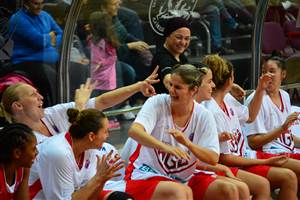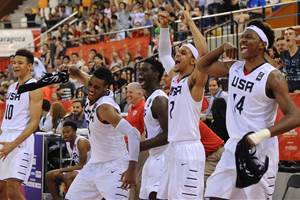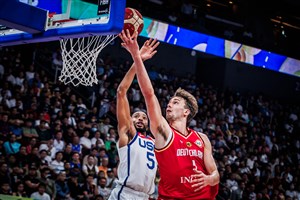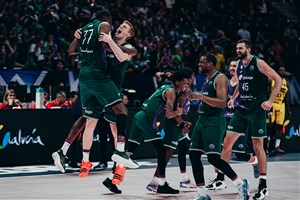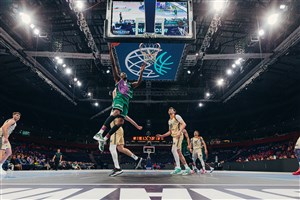
Should Bahrami and Kamrani return to Iran's national team?
MANILA (Enzo Flojo's Asia on my Mind) - Iran did well in 2016, winning the FIBA Asia Challenge that was held on home soil. That was a great way to bounce back from their debacle in the FIBA Asia Championship 2015, where Team Melli missed out on a berth in the Final and had to settle for third place behind the Philippines and eventual champs China.
Last year, Iran saw a number of rising stars finally take center stage. Foremost among these was Behnam Yakhchali, a combo guard who has good enough handles to spot minutes at point guard while also possessing the size and shooting touch to be a really effective shooting guard. He normed around 12 points, 6 rebounds, 2 assists, 1 steal and 3 triples per game in the FIBA Asia Challenge. Yakhchali's wing partner, Mohammad Jamshidi, also shone, averaging 10 points, 4 rebounds and 4 assists as Iran took home the top prize in the biennial joust. They went unbeaten in eight games, winning by an average of 32.3 points. Needless to say, their big man in the middle, Hamed Haddadi, was also unstoppable, putting up 18.0 points and 13.8 boards per contest while young frontliners Mohammad Hassanzadeh and Arsalan Kazemi also did a lot of damage.
FIBA Asia Challenge: Iran wins champion https://t.co/Dam16p5mVE pic.twitter.com/Vf6Wj6zYAm
— China Plus News (@ChinaPlusNews) September 19, 2016
Without a doubt, Iran's former coach Dirk Bauermann was happy with their performance last year, and new play caller Mehran Hatami is certainly going to set lofty goals for the squad this year.
Iran have actually already achieved one of their targets, placing second in the WABA Championship 2017 to officially advance to the FIBA Asia Cup 2017. A loss to Lebanon in that competition prevented Team Melli from bringing home the title, but they can take consolation in the fact that they were not at full strength.
What makes all these accomplishments by this iteration of the Iran national side so interesting is this - they did it without two of their most iconic players: Samad Nikkhah Bahrami and Mahdi Kamrani.
Both Bahrami and Kamrani were famously part of Iran's "golden generation", helping the country shoot up in the FIBA World Rankings by winning three of the last five FIBA Asia Championships (2007, 2009 and 2013) and the last three FIBA Asia Cups/Challenges (2012, 2014 and 2016). The last time they played on the team was in 2015, where, again, Iran fell short of their primary objective.With the preparations for the FIBA Asia Cup 2017 looming, one big questions is this: are Bahrami and Kamrani still needed by the Iran national team?
To be brutally frank, my answer is no.
I think Iran's most recent performances at the Asian level and even their commendable play in the FIBA Olympic Qualifying Tournament 2016 in Italy prove that this generation of hoopsters can hack it on their own. It's a new dawn for Iranian basketball, and I believe bringing Bahrami and Kamrani back is no longer necessary.
Take note, having both veterans return to the national program won't hurt. I am certain that Mehran can make use of their collective experience, leadership and skills. But I don't see either Bahrami or Kamrani being comfortable taking a backseat to guys like Yakhchali, Jamshidi, Kazemi, or even other up-and-comers like Sajjad Mashayekhi and Vahid Dalirzahan. Bahrami and Kamrani will take precious minutes away from these young guns, minutes that are necessary to fast-track their development.
Why is that important? Here is the reason: this Iranian team is not only preparing for the FIBA Asia Cup this year. They are also looking ahead to the FIBA Basketball World Cup 2019, where they will need as many players as possible who are at their physical peak. If Iran manage to qualify for the first-ever staging of FIBA's flagship event with 32 teams, Bahrami will be 36 and Kamrani will be 37. I don't know about you, but building a national team around players in their late 30s is too much of a gamble.
Hadaddi is on a different boat because Iran have never - and probably never will - see any center as dominant as he has been. What Yao Ming was to China in the early to mid-2000s, Haddadi has been for Iran the past eight years or so. As for Bahrami and Kamrani, it is now clear that there are younger players ready and able to take their spots.
Having said that, the contributions of both Bahrami and Kamrani to the advancement and progress of Iranian hoops cannot and should not be understated. If not for them, it's highly unlikely Iran would have had the majestic run that they have enjoyed this past decade. The fact of the matter, however, is that, inevitably, a time will come when the old guard must give way to the new, and, at least for Iran, that time is now.Enzo Flojo
FIBA
FIBA's columnists write on a wide range of topics relating to basketball that are of interest to them. The opinions they express are their own and in no way reflect those of FIBA.
FIBA takes no responsibility and gives no guarantees, warranties or representations, implied or otherwise, for the content or accuracy of the content and opinion expressed in the above article.


